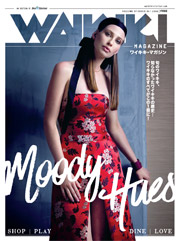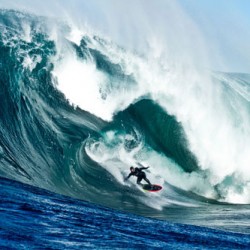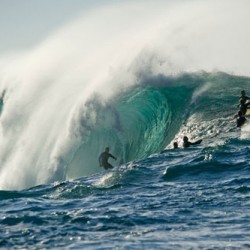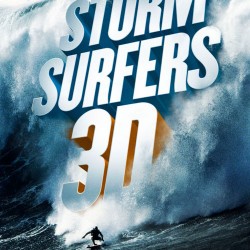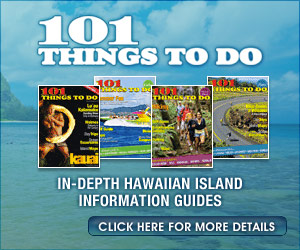Riders on the Storm
Kicking back with surfing greats Tom Carroll and Ross Clarke-Jones
Surf legends Tom Carroll and Ross Clarke-Jones teamed up to film Storm Surfers 3D—an action-packed documentary that followed the two iconic big wave surfers on their quest for the world’s biggest waves. Get your copy of the DVD when it comes out on Aug. 6. Meanwhile, we had the chance to catch up with the duo when they paid O’ahu a visit.
Waikiki Magazine: You were both doing the World Tour in the ’80s and ’90s when the competition was between surfers. What made you choose to pursue big wave surfing and compete with Mother Nature instead?
Ross Clarke-Jones: I was sort of one of those guys who was in it for the lifestyle … I enjoyed the Tour for what it was and never really did that well in competition. But my first passion and love was for riding big waves …
In 1995, I finished the tour. My sponsor, Quiksilver, pretty much said, yeah, you’re not doing that well in the Tour. You ride big waves, let’s go and just shoot it and document it that way … That’s when my life began really. I went from a struggling pro surfer to a struggling big wave surfer. In 2001 when I won the Eddie Aikau, it changed my life.
Tom Carroll: I think that I was already kind of there, doing it.
I naturally kind of liked that feeling of being in the ocean, of being adrenalized and pushing myself. It ultimately started as an extension of using my skills that I already had developed and pushing that intensity out there, so big wave riding was sort of just a natural progression for me.
WM: Waikiki is a place where tens of thousands of people have their first discovery of surfing. If you were giving people their first experience of surfing in Waikiki, what would your surf session be like?
TC: It’s going to be life-changing. It’s going to be memorable. I think the most beautiful thing to see is when someone stands up on a wave for the first time and their whole body, every cell is alive and they’ve got to do it and they’re feeling it. They’re just like, “Yes!” and you see their face light up.
RCJ: I think it depends who you’re teaching as well, whether it’s a woman, or a child or an older person. Not that I’ve taught a lot of people, but I’ve taken people out to the water for the experience of surfing. I haven’t told this story to a lot of people, but I once to took a kid out surfing who was dying of cancer—he had leukemia. It was the most rewarding thing I’ve ever done in surfing. I got him on a board in these two-foot waves, hung to him and pushed him on the wave and that was an experience I’ll never forget, and I don’t think he will either.
It was transformative. And this kid is good now, he’s a healthy young kid again.
TC: We’re involved with the Disabled Surfing Association in Australia and we did hands-on days where we’ll get down and watch people that are completely disfigured and watch them transform when they hit the ocean and hit the water. A moving ocean and the feeling of water on the skin, number one, is something that bring us alive and it brings us to our senses really quick. You can see it happening with people all the time, who come alive when they jump in the ocean. There’s this light that comes on and they get something that they can’t get on land.
And Hawai’i is like that and that’s why I love it. Waikiki, especially, imagine how much Waikiki has given to the world. How many moments like that has it offered to people? We were stand-up-paddling yesterday, and in the water there were surfers, boats, canoes—anything that floats—so many people enjoying and experiencing the ocean. You can’t get it anywhere else in the world and that’s why we keep coming back.



